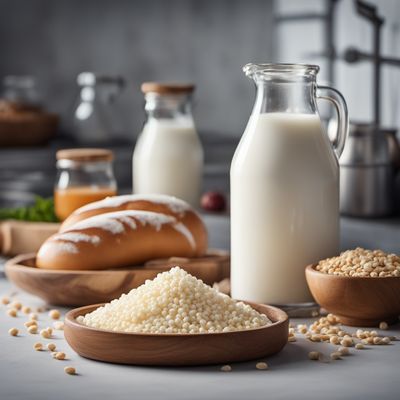
Ingredient
Human milk
Nature's Nourishment
Human milk is a natural and complete food that is produced by lactating humans. It is rich in proteins, carbohydrates, fats, vitamins, and minerals, tailored specifically to meet the nutritional needs of infants. With a creamy appearance and a slightly sweet taste, human milk is easily digestible and promotes healthy growth and immunity in babies.
Origins and history
Human milk has been the primary source of nutrition for infants since the beginning of human existence. It is a unique substance that is produced by lactating humans and provides optimal nutrition for newborns. Breastfeeding has significant cultural and historical importance, as it fosters a strong bond between mother and child and has been practiced across different cultures throughout history.
Nutritional information
Human milk is a rich source of essential nutrients, including proteins, carbohydrates, fats, vitamins, and minerals, which are crucial for the growth and development of infants. It also contains antibodies that help protect babies from infections and diseases. The exact nutritional composition of human milk varies depending on the mother's diet and overall health.
How to select
When selecting human milk, it is important to ensure that it is obtained from a trusted and reliable source, such as a milk bank or a lactating mother who follows proper hygiene practices. It is recommended to consult with healthcare professionals or lactation experts for guidance on safe and appropriate sources of human milk.
Storage recommendations
Human milk is best stored in clean, sterilized containers and refrigerated immediately after expression. It can be stored in the refrigerator for up to 4 days or in the freezer for up to 6 months. It is important to follow proper storage guidelines to maintain the freshness and quality of the milk.
Preparation tips
Human milk can be consumed directly by infants through breastfeeding. For mothers who are unable to breastfeed, human milk can be expressed and fed to babies using bottles or other feeding devices. It can also be used as an ingredient in various baby food recipes, such as cereals, purees, and smoothies. It is important to follow proper hygiene practices and consult with healthcare professionals for guidance on introducing human milk to infants.
Culinary uses
Human milk is primarily used as a source of nutrition for infants, either through direct breastfeeding or expressed milk. It is not commonly used in culinary applications for adults.
More ingredients from this category

Reindeer milk
Arctic Elixir: Unveiling the Secrets of Reindeer Milk

Bactrian camel milk
"The Golden Elixir: Unveiling the Richness of Bactrian Camel Milk"

Elk milk
The Nutritional Elixir: Unveiling the Wonders of Elk Milk

Milk from other milk producer animals
The Versatile Dairy Elixir

Dromedary milk
The Versatile Dromedary Milk